Bone-conduction headphones are a niche product primarily used by athletes and fitness fans who need to stay aware of their surroundings. The H20 Audio Tri Pro aims to cater to this market. The headphones offer waterproofing, Bluetooth, internal storage, and a secure fit, making them suitable for swimming, running, and cycling activities – or, to put it another way, perfect for triathlons. However, the headphones face stiff competition from brands like Shokz, known for its superior sound quality and user-friendly designs.
William Austin-Lobley, a regular user of bone-conduction tech and seasoned tester of the best headphones around, tested the H20 Audio Tri Pro. Read on to see his review after weeks of testing.
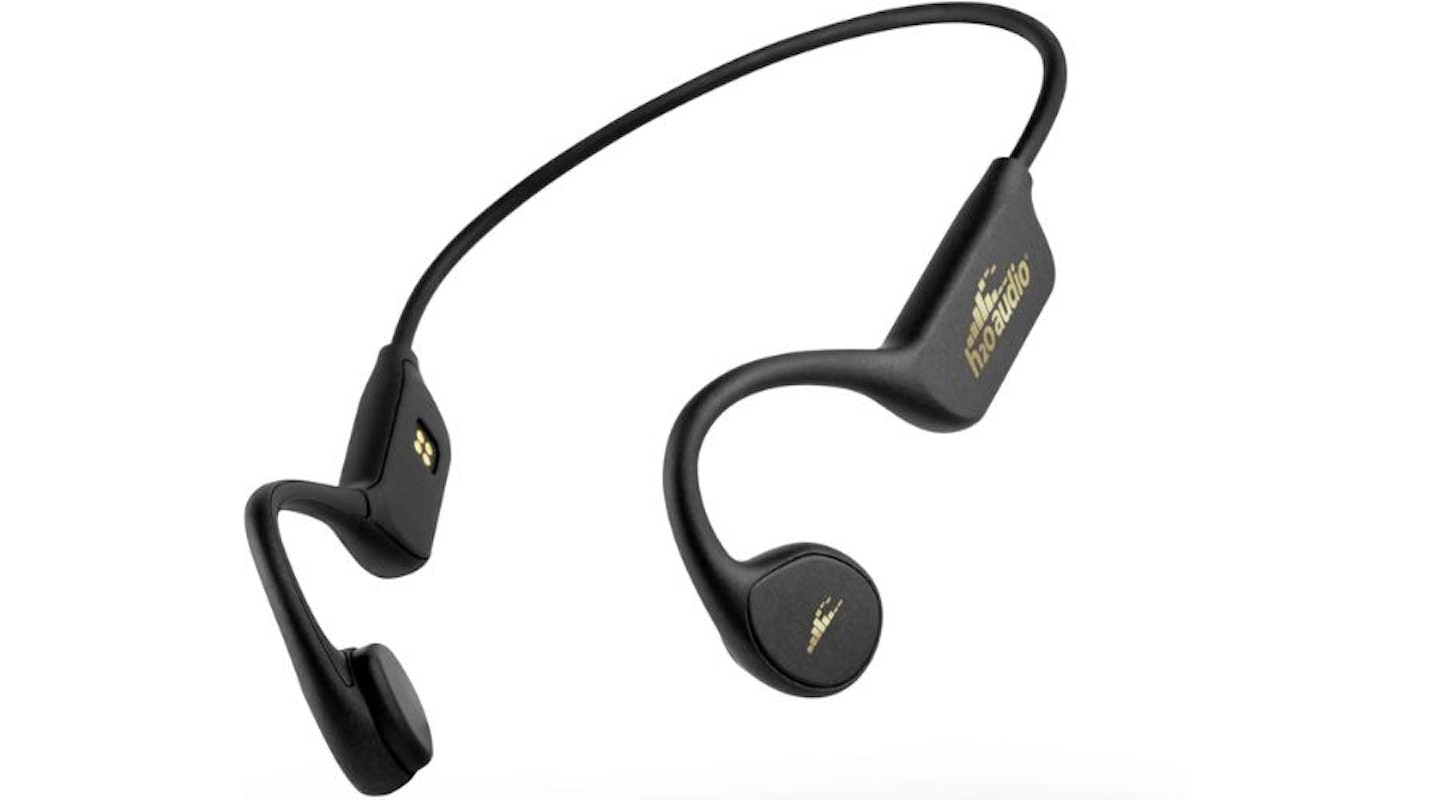 H20 Audio
H20 AudioPros
- Acceptable bone-conduction experience
- Music organising in the app for stored audio
- Ticks all the basics
Cons
- Better sound with rival brands for a small extra spend
- App limited to one useful feature
- Plastic finish
| Battery life | Five hours |
| Charging time | ~2h |
| IP rating | IPX8 |
| Weight | 34g |
| Storage | 8GB |
The daily experience: Sound, build and controls
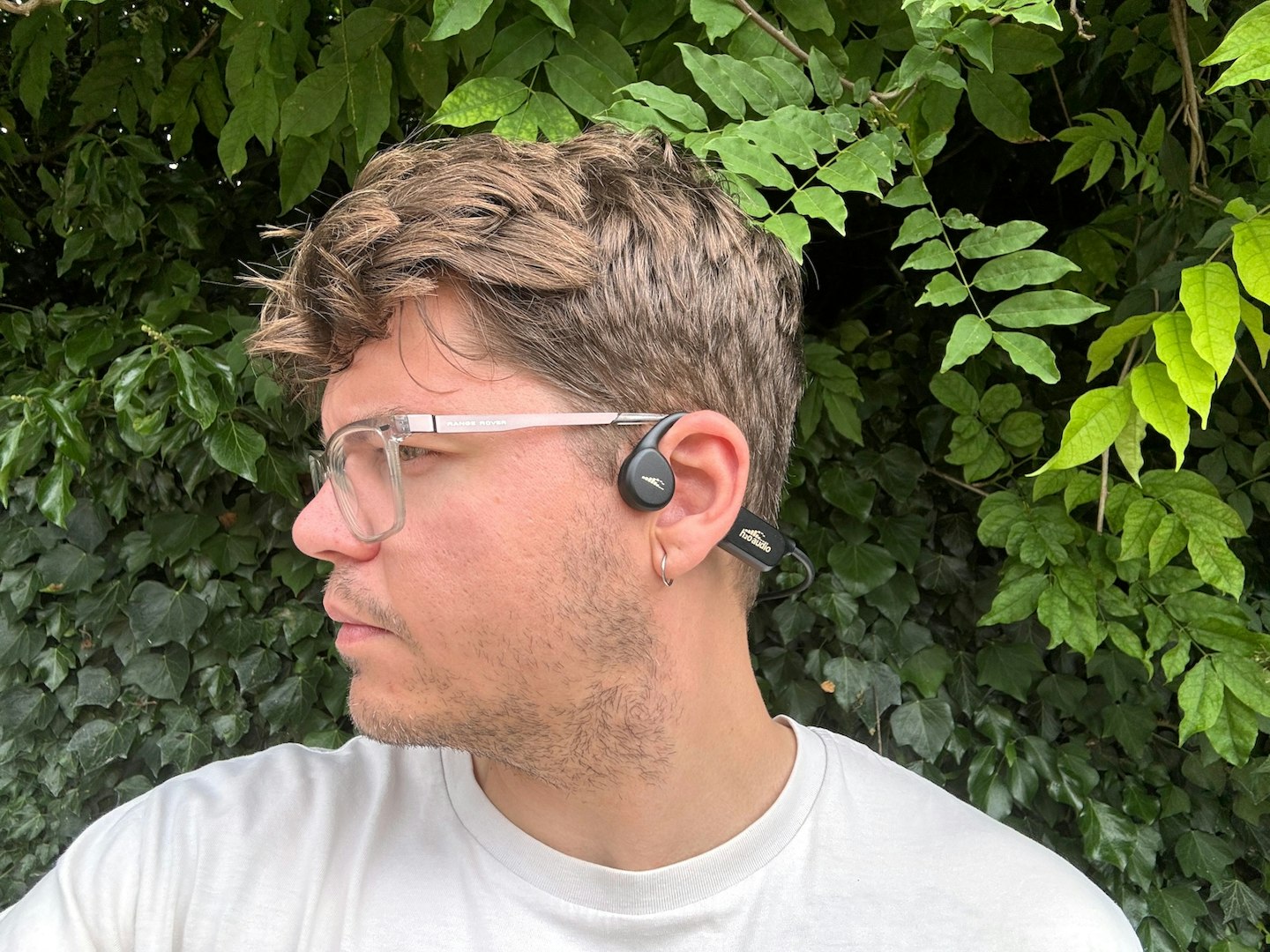
H20 Audio Tri Pro has a standard bone-conduction headphone performance. The audio is clear and well-defined, with a preference for mid- and high-tones. Bass is present but does cause a vibrating sensation in the temples at high volumes. This wasn't such an issue when listening to podcasts or even older rock and punk tracks from Iggy Pop and The Stooges or Gang Of Four, but when switching to bass-heavy music from Wu-Tang Clan and MF Doom, the experience was unpleasant. It's an experience I am used to, having tested bone-conduction headphones for many years. Still, some options have moved on from this situation – notably recent generation models from Shokz, such as the OpenSwim Pro I reviewed recently.
Note that bass performance improves in water due to the earplugs and conduction.
The H20 Audio Tri Pro performance will be acceptable for anyone looking to soundtrack their training with background noise and the occasional bop distraction. Still, if you're really into sound quality, some better options are available at a marginally higher price point.
The headphones weigh 34g, and they feel nicely balanced when worn. The drivers and ear hooks are thicker than other models I've tried, which has them sit a little together over the ear, but this is not a bad thing. The headband, which halos around the rear of the head, has a well-tensioned wire that pinches the headphones to the head firmly, again without discomfort. This is what you need to ensure that fast, intense exercise – like sprints or burpees – doesn't dislodge the headphone position.
The Tri Pro are fully waterproof, and by requirement, this results in a robust build quality. That said, the finish of the H20 Audio Tri Pro is a tad 'plastic' for my tastes.
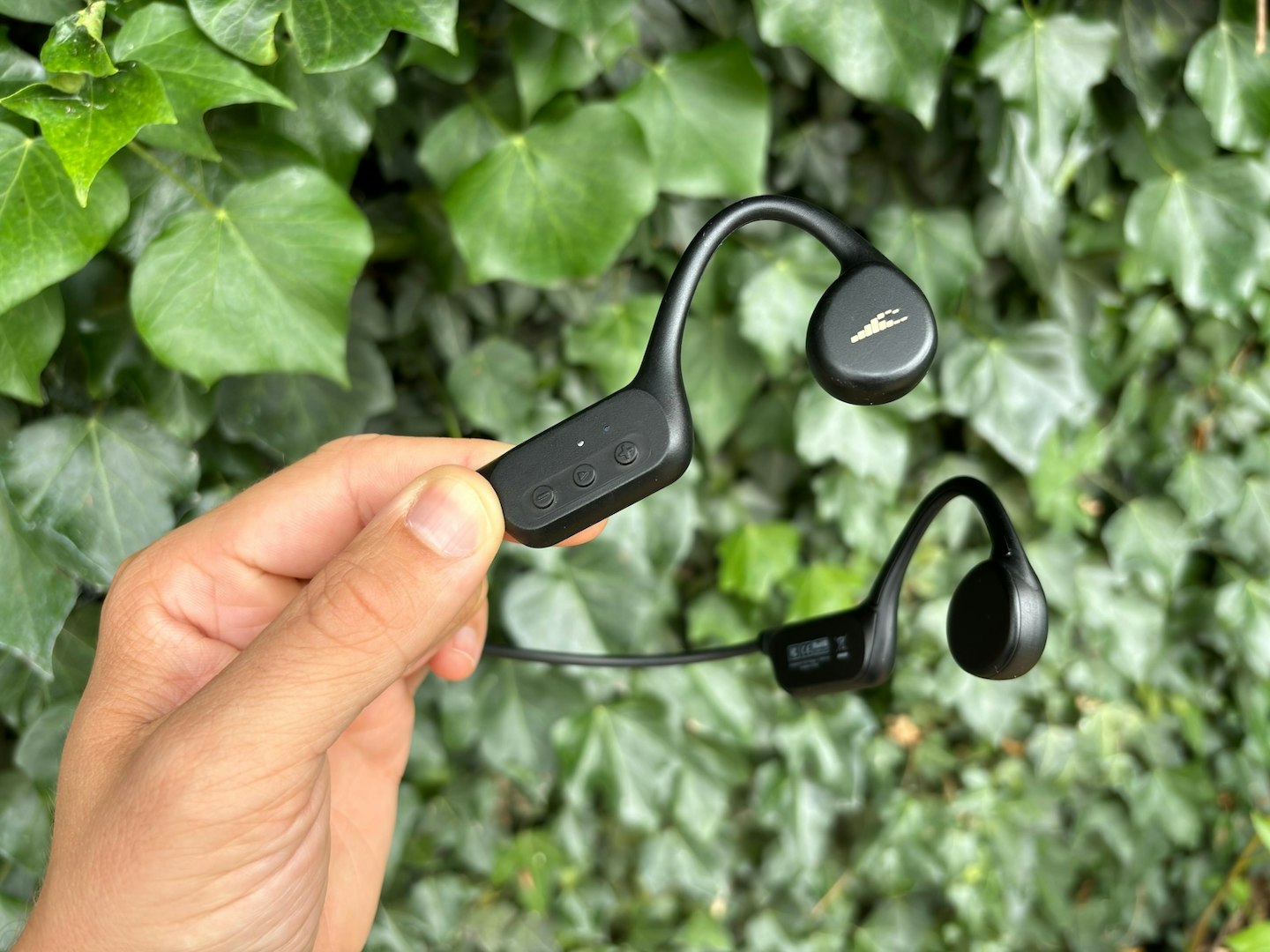
The H20 Audio Tri Pro bone-conduction headphones are controlled by three buttons outside the right temple. The middle button, known as the 'M' button or mode button, controls the power, listening mode (switching between Bluetooth and memory), and play/pause. The plus and minus buttons control volume. They can be held to skip songs or double-tapped to skip a folder when listening to stored music.
The controls work as they should and are easy enough to remember. However, the buttons themselves are wholly awkward to use. They are very stiff and require a pinching motion to give enough force to activate – or you can push the headphones into your head. Again, this is a notable step down compared to anything from Shokz, with its products having universally easy-to-use controls.
The extras: Memory, battery and charging, app and accessories

Physics works against Bluetooth – as it relies on radio waves, it doesn't work well in the water, so swimmers will rely on the internal storage. There's 8GB to play with, which can handle up to 2,000 songs. Music can be stored in folders, which can be skipped between using a double tap of the skip button. This gives you the chance to organise your music by genre, workout type, or any other preferences you may have. It's a nice touch.
The headphones have about five hours of battery life, which is on the lower side of what I expect from this technology. However, it's not egregious and will see most people through their half-marathon, marathon, or triathlon. Other options from H20 Audio have up to seven hours.
The Tri Pro charges from a proprietary connection. Shokz does a similar thing with its OpenSwim Pro because this type of connection offers improved waterproofing over a USB-C port. The Tri Pro cable has two magnets that ensure the charger is positioned the correct way up. The issue is that the magnet could be stronger, and it's really easy to nudge the connection from its place, stopping charging or interrupting communication with a PC. It is a minor pain, but a pain nonetheless.
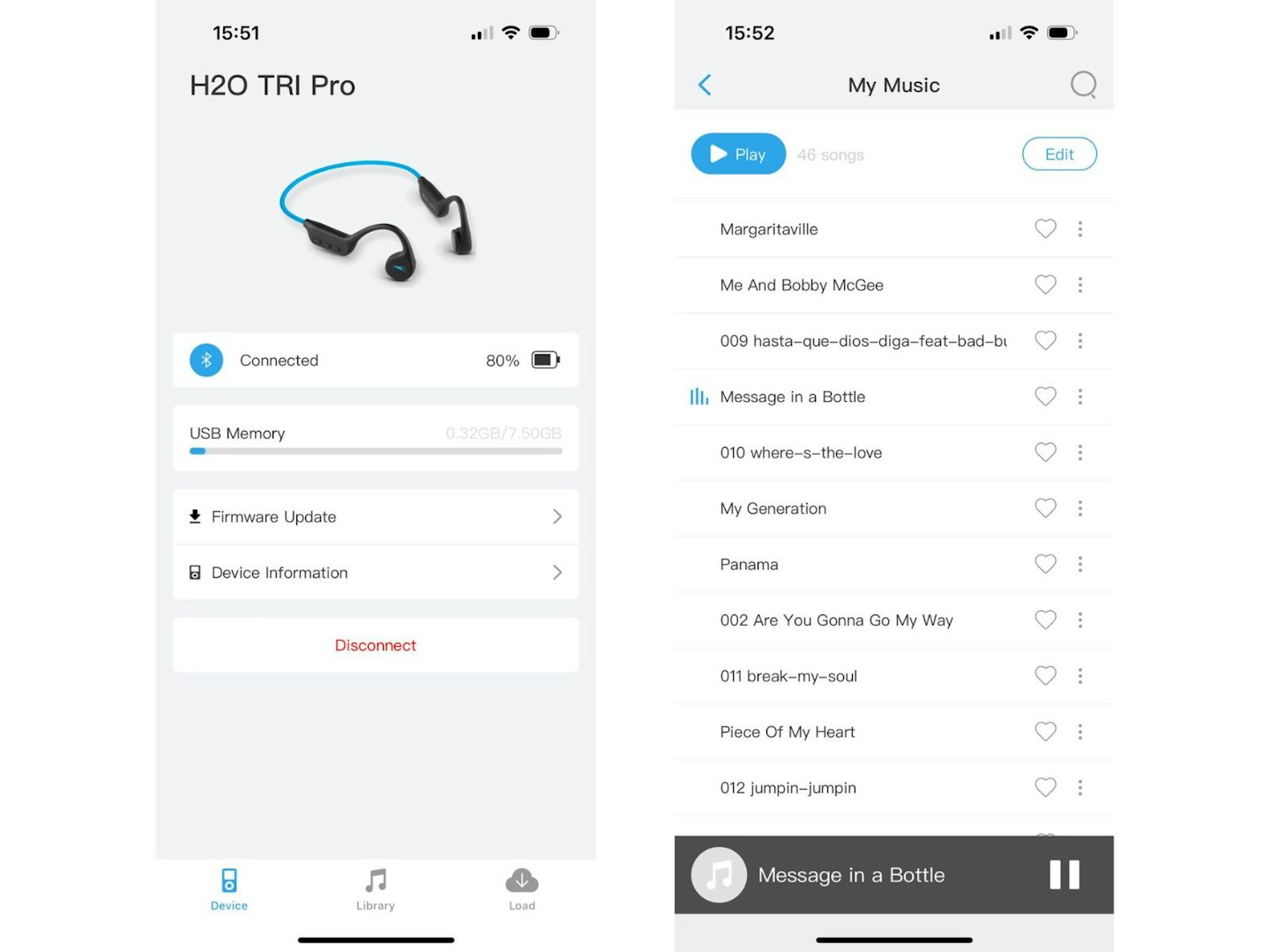
The H20 Audio app is simple. Oddly, it answers one of the biggest issues with rival Shokz's app while offering almost nothing else. The thing the app does well – and that Shokz lacks – is to allow you control over the 8GB of music storage. You can organise your stored music and add new tracks remotely or create playlists using the system's folder creation system. Sadly, this and firmware updates are all it offers. There's no EQ mode or control customisation, which is a disappointment as this is basically an industry standard at this point.
The Tri Pro comes with earplugs, which allow you to isolate the audio and prevent water from entering the ears when swimming (bone-conduction technology means you can still hear audio, even with blocked ears), and a rubber leash. The leash allows you to connect the Tro Pro to goggles, hat or glasses, so you don't have to backtrack mid-session to pick them up should they fall. In my experience with bone-conduction headphones, having them fall off has never been an issue, but this may give some users peace of mind, significantly when open-water swimming, where dropped your headphones could see them lost to the watery depths, or when cycling and road traffic poses a threat to delicate tech.
It's a shame there's no case or bag for storage when the headphones aren't in use. This would have been an excellent addition, just to keep the accessories all together.
Any problems?
There are no out-and-out failures with the H20 Audio Tri Pro, just minor letdowns, as detailed throughout this review. To bring them together, we are looking at the following shortcomings: average sound, average battery, a plastic finish, clunky controls and an app that offers only music organisation.
Price and competition
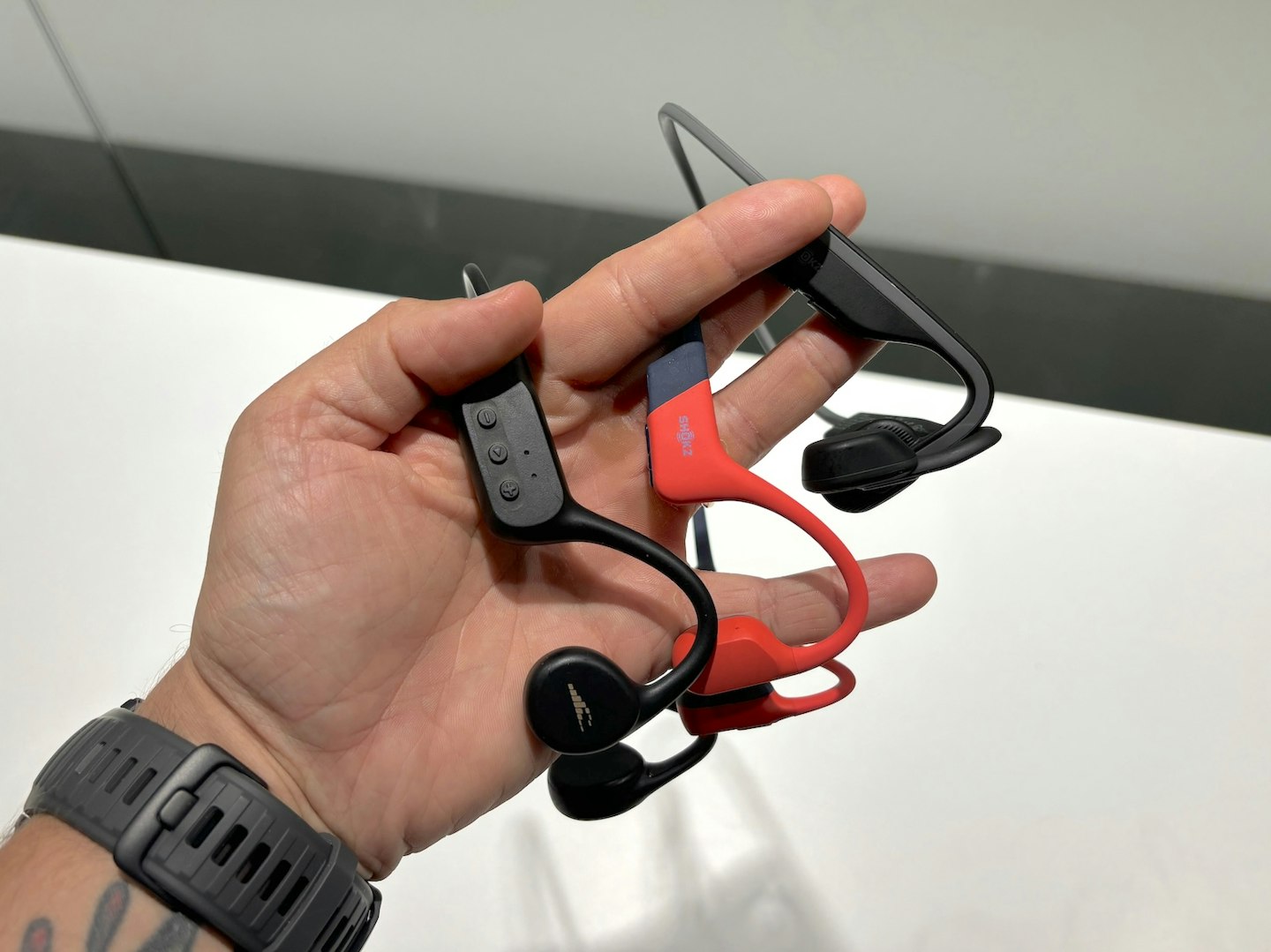
As far as reliable waterproof bone-conduction headphones go, the H20 Audio Tri Pro is not a budget pick at £149. They offer an average bone-conduction performance. For a similar price, you can enter the Shokz waterproof range with the OpenSwim base model, which has a superior sound though no Bluetooth.
The Shokz OpenSwim Pro is more of an investment but is the don of the triathlon-ready bone-conduction market. With Bluetooth, 32GB of storage, and a vastly superior audio performance, these are the ones you should aspire to at £169.
Who is it for?
For safety and convenience, open-ear headphones like these are essential for exercise and training in public spaces or even when racing. If you are someone who likes audio to help you through long training sessions and you require waterproofing for swimming, these tick the boxes.
Would we recommend it?
Is a shrug a recommendation? I’ll call it a yes with little enthusiasm and several caveats. The fit is comfortable; the sound is dated but acceptable; the battery life is fine, and the app – while mostly useless – does have very welcome music-organising tools. The controls are clunky, but if you are exercising, your interaction with them is likely to be limited, so this might not serve as an issue. They are average, ticking the boxes on bone conduction and no more.
If you are hard-set on going against the grain, you may still want to go for the H20 Audio option, but I think you get a much better experience with the Shokz OpenSwim or OpenSwim Pro. Or, to save money, if you can forego the waterproofing and internal storage, I recommend the Shokz OpenMove Wireless Headphones to get a better experience.
Other items to consider
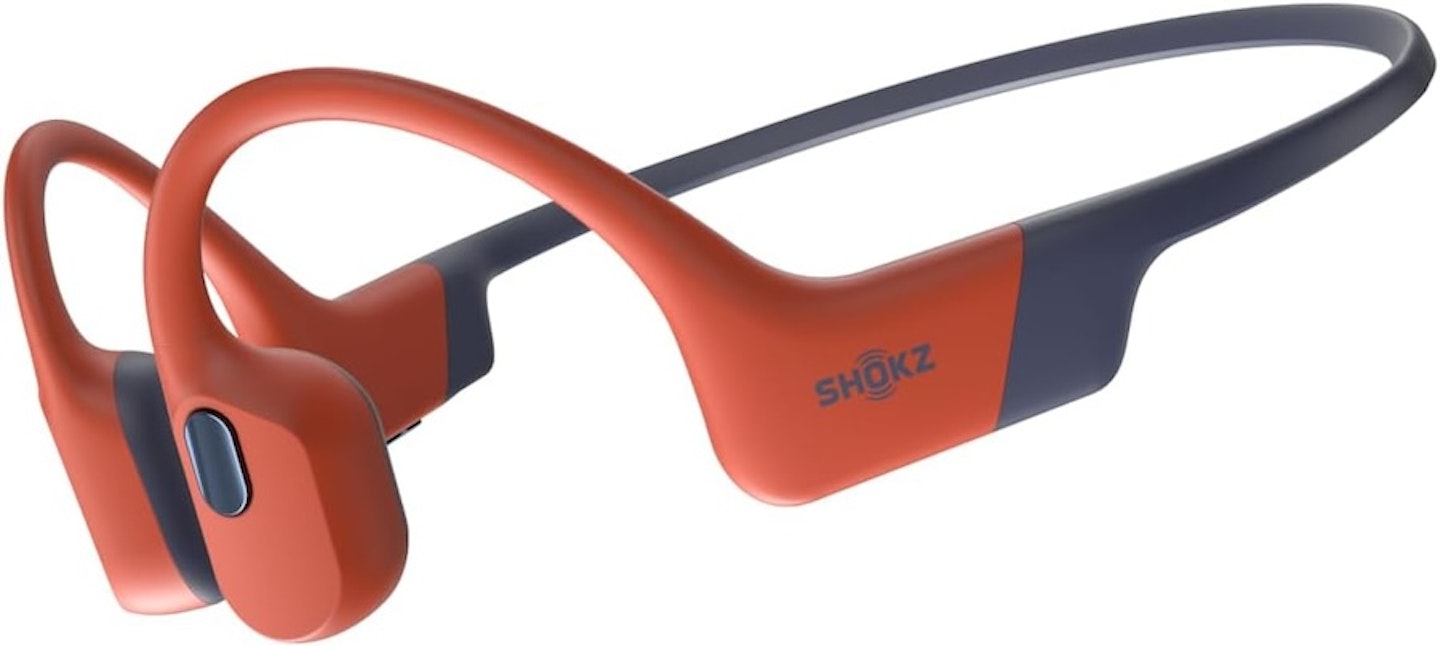 Shokz
ShokzAll that the H20 Audio Tri Pro offers, but with excellent results - plus 32GB of storage, rather than H20 Audio’s 8GB. The only downside of going for the OpenSwim Pro is that there is no music organisation.
3.
Suunto Wing
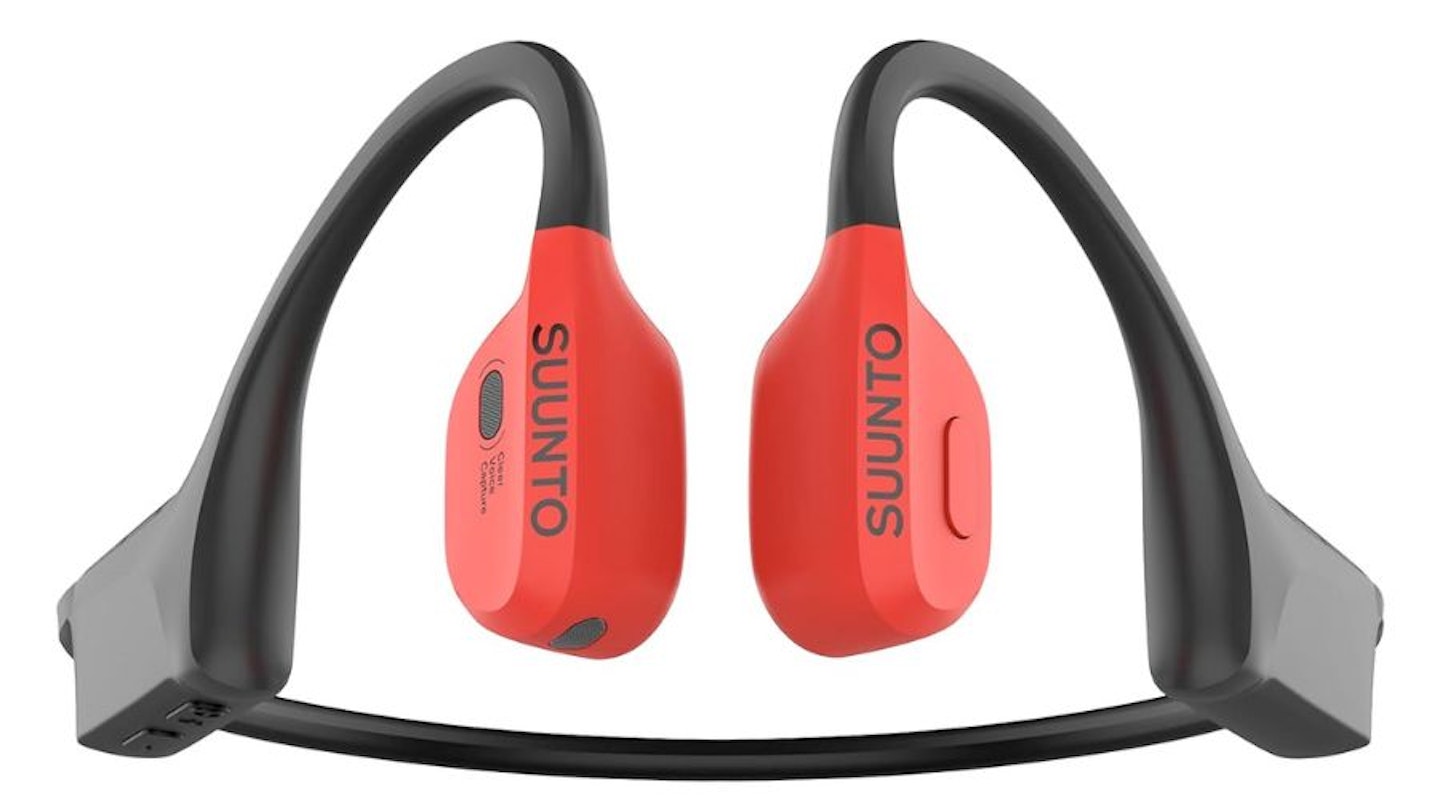 Suunto
SuuntoThe Suunto Wing, a solid offering from a reliable fitness brand, is IP67-rated. However, they are Bluetooth only, meaning you’ll have to rely on the waterproofing to keep them safe in heavy rain rather than using them for swimming. The battery life is impressive, with the extra battery dock providing up to 30 hours of playback.
 Shokz
ShokzA cheaper alternative to the H20 Audio Tri Pro. No full waterproofing or internal storage, but the essential bone conduction experience is delivered really well.
Why should you trust us?
At What’s The Best, our mission is to provide accurate and reliable reviews, ensuring our readers receive honest and transparent information about the best technology products available. Anything less would undermine our commitment to being a trusted source of unbiased product information.
Our dedicated in-house writing team comprises experts with extensive experience and a genuine passion for technology. Collectively, we have spent decades testing and writing about tech, leveraging our expertise in all our articles, advice pieces and reviews.
We maintain complete editorial independence and do not accept payment for product reviews. Our writers have full control over their content, ensuring that products are selected based solely on the needs of our readers. While we may earn commissions or other compensation from links on our website, this never affects our product choices. These links enable us to continue offering valuable consumer advice, without compromising the integrity of our reviews.
How we test products at What's The Best
Struggling to navigate the audio world? We provide unbiased reviews for real listeners.
At What's The Best, we ditch the technical jargon and deliver sound reviews for sound people. Our team of audio enthusiasts puts everyday speakers, headphones, and more through their paces in real-world listening scenarios. We don't waste your time with staged tests – we focus on how these products actually perform for everyday music lovers.
The result? Unbiased buying advice you can trust. We only review the most relevant and impactful audio products on the market, so you know you're getting the latest insights. Can't find a review for your specific gear? We're constantly expanding our review database, so stay tuned!
Want to dive deeper into how we test audio products? Visit our dedicated page detailing how we go about performing our audio reviews.
William Austin-Lobley is the Editor for What's The Best. Here, he oversees, curates and researches listicles and reviews as many products as his home office can handle.
He has spent nearly five years writing about tech, audio, outdoors and fitness and has reviewed everything from smartphones to ice baths. In addition, he's well-versed in sniffing out the best deals and savings the internet offers.
When not at his desk writing, reviewing or deal-hunting, he'll be relaxing with Japanese crime novels, bingeing some classic anime, strolling the countryside or at the gym listening to the heaviest metal Spotify has to offer.
Subscribe to the What’s The Best Newsletter to keep up to date with more of the latest reviews and recommendations from the What’s The Best team.
